In April 1967 the URW walked off of jobs at Goodrich, Firestone, and Uniroyal, and the resulting strike stalled rubber production in Akron for 86 days.
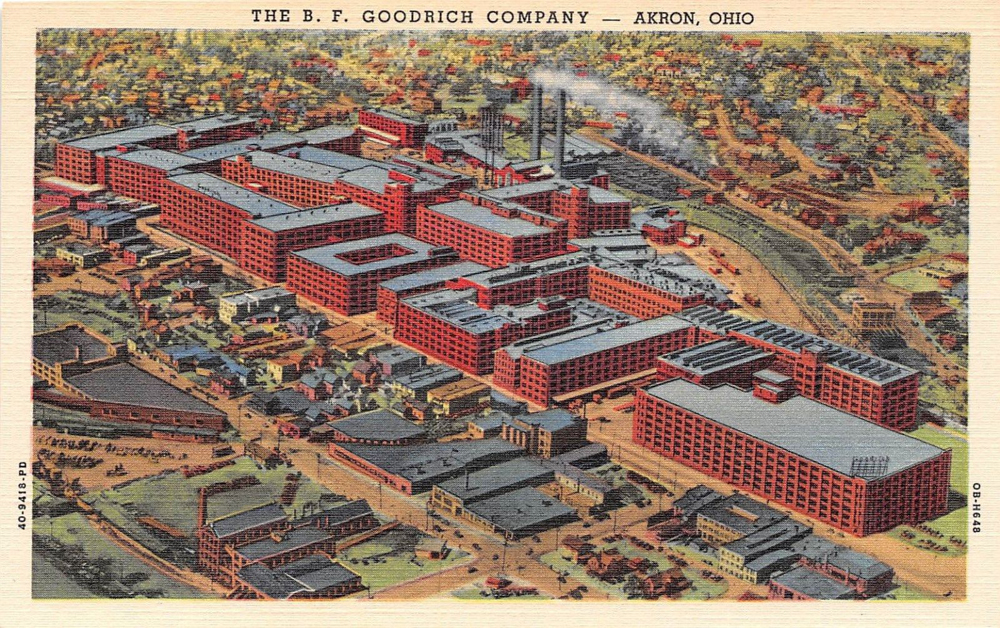

In April 1967 the URW walked off of jobs at Goodrich, Firestone, and Uniroyal, and the resulting strike stalled rubber production in Akron for 86 days.

Goodrich ran television and print ads showing an empty blue sky, to distinguish themselves from the similar-sounding Goodyear tire company. The tagline was, “See that blimp up in the sky? We’re the other guys!”
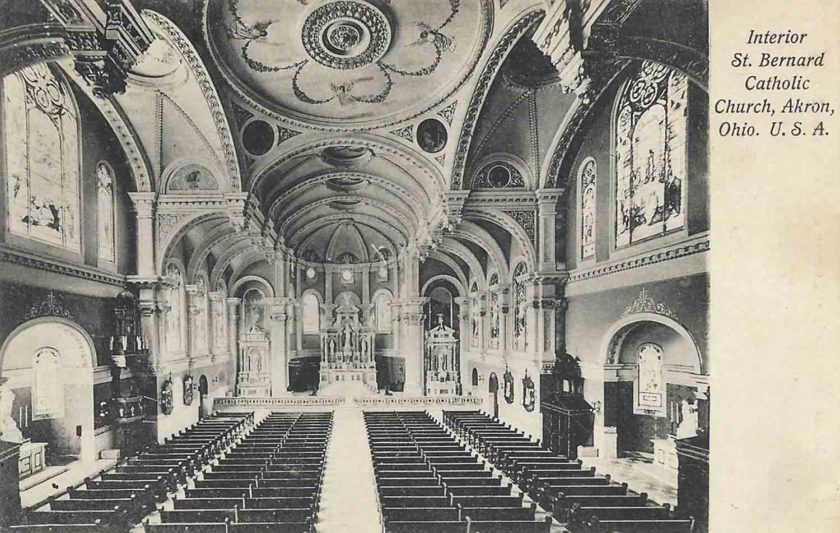
Construction on the current church building began in 1902, and was opened in 1905. The building features a German Baroque Romanesque style and was designed by Akron-born architect William P. Ginther. St. Bernard Church was added to the National Register of Historic Places in 1989.

Patriotism is on display as Akronites turn out for a celebration on South Main Street.

Once known as Old Maid’s Kitchen, the site can be found in the Gorge Metro Park. Today, the cave is named for Mary Campbell, a white settler from Pennsylvania taken captive by the Leni Lenape Indians and brought to the Cuyahoga Valley and possibly the Gorge.

The Diamond Rubber Company was a manufacturer of vehicle tires and other rubber products at the end of the 19th, and into the early 20th century. The company was created in 1894 by famed local industrialist O.C. Barber.

A Glimpse into Akron’s Past: The Second National Bank and The United States Express Company This vintage postcard showcases the main building that once housed the Second National Bank of Akron, a cornerstone of the city’s financial landscape. But just a few doors down the road, a fascinating piece of Akron’s history unfolds with the…
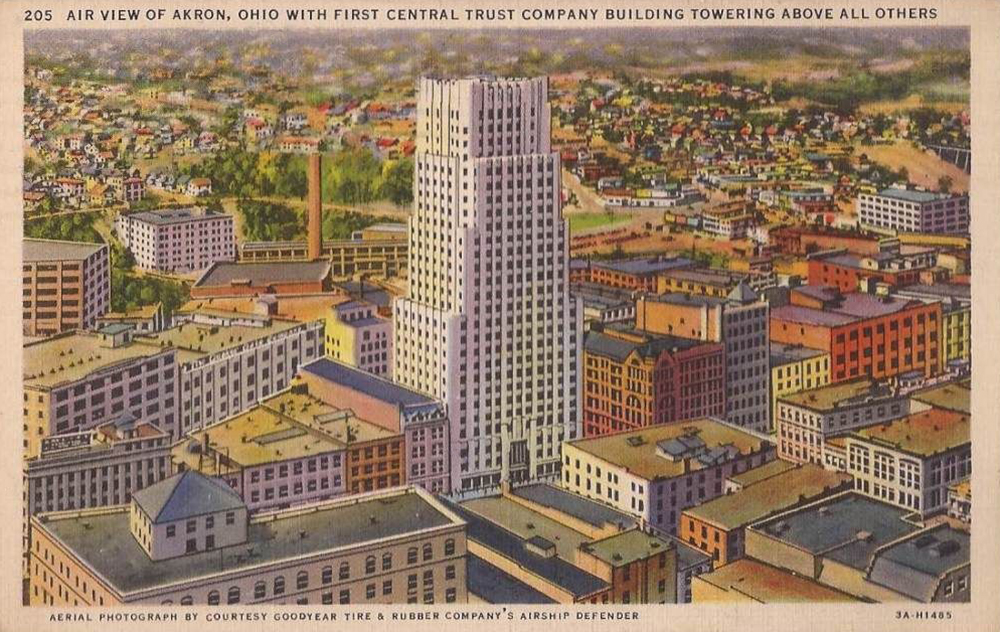
In 1904, the Akron-based Central Savings Bank merged with the Akron Trust Company to form Central Savings & Trust Company. In 1947, the First National Bank of Akron took control of the Central Savings and converted to a commercial bank. At that time the tower took on the name “First National Tower”.
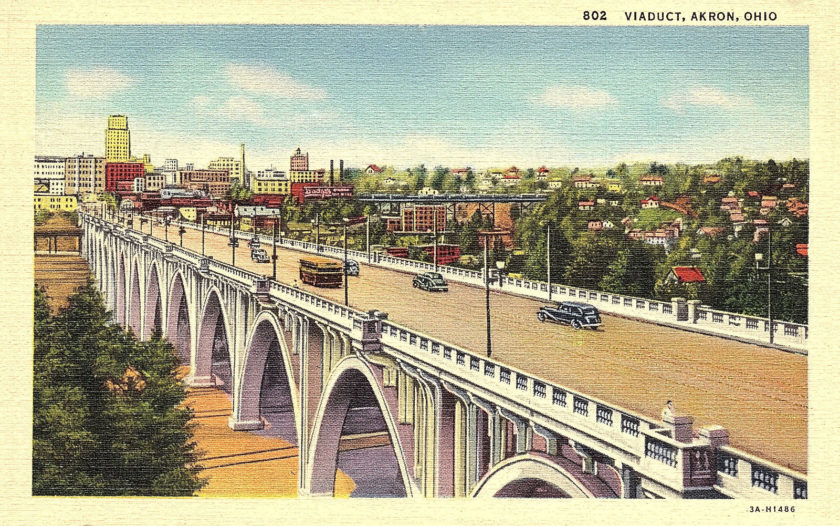
Designed by Howard, Harrington & Ash of Kansas City, this 2,810-foot span opened in 1922, with a grand parade that attracted 150,000 spectators. In 1978, a little more than 50 years after its completion, the bridge was demolished and replaced by the “All-America Y-Bridge.
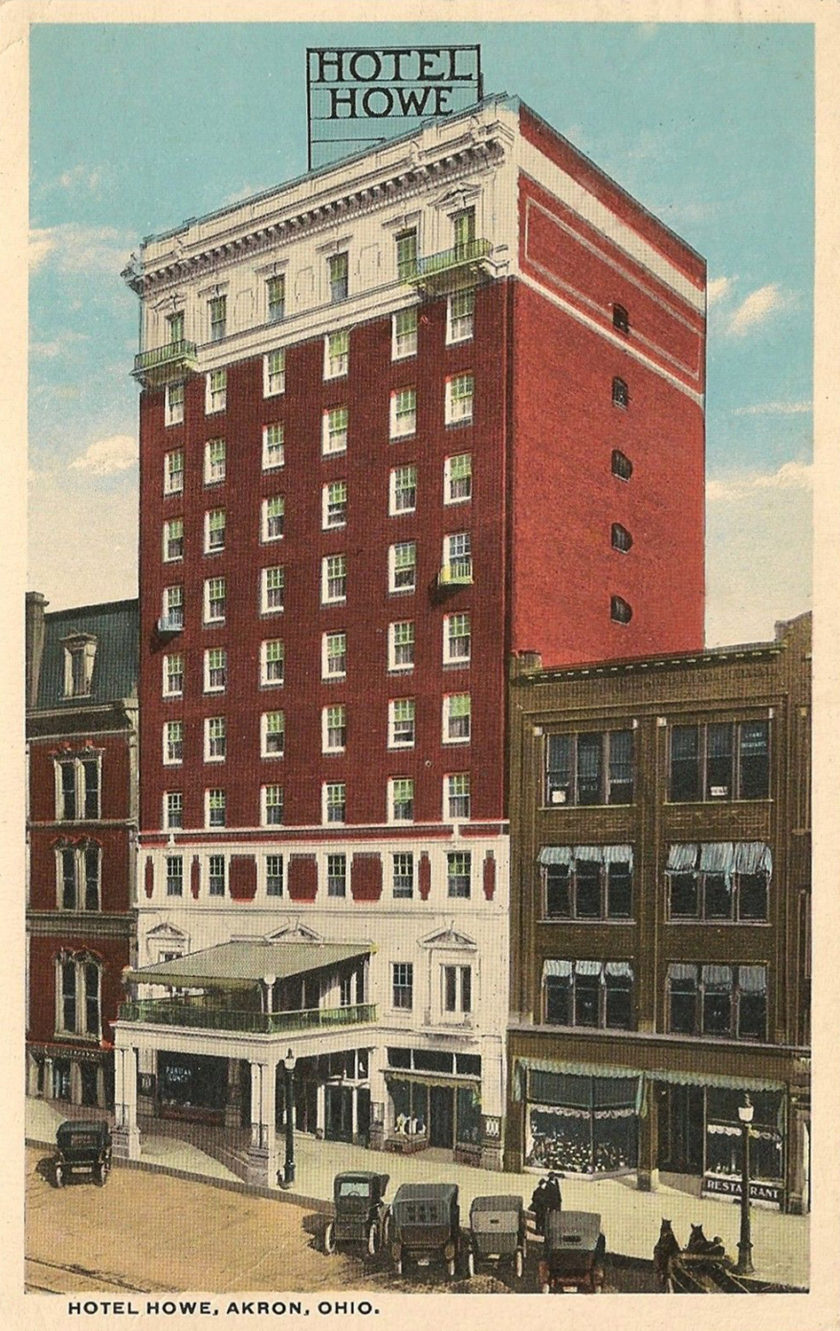
This towering structure once stood at 11 South Main Street. The 11-story, 112-room hotel was the tallest building in Akron when it opened in 1915. The hotel, which had been left vacant and neglected for years, was demolished in 1998.

In the early 1900s, the Northern Ohio Traction & Light Company built a power plant and concrete dam on the Cuyahoga River in present day Cuyahoga Falls, Ohio. Although the power plant is long gone, the dam remains and its waters continue hide Big Falls.
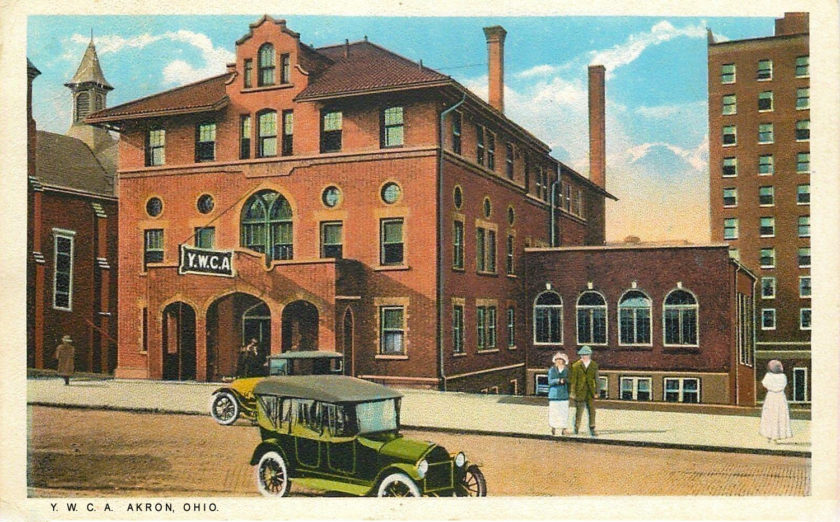
In 2005, after 104 years of service to the community, Akron’s YWCA officially disbanding. The former Y.W.C.A. building at 22 S. High St. was originally called the Grace House, (later known as the Sawan Building). The YWCA moved into the building in 1907 after remodeling and adding a cafeteria, swimming pool, gym, and track. The…

Lower and Higher Bridges over the Cuyahoga River. The Lower Bridge, at Gorge, was 100 feet long by 50 feet wide and made of wood with iron supports. The Higher Bridge was 375 feet long by 101 feet high. It was erected in 1904 at a cost of $70,000. Although primarily used for electric cars,…

Another busy day on Akron’s Main Street. The abundance of entertainment, shopping, and dining establishments served as a draw to Akron’s downtown.
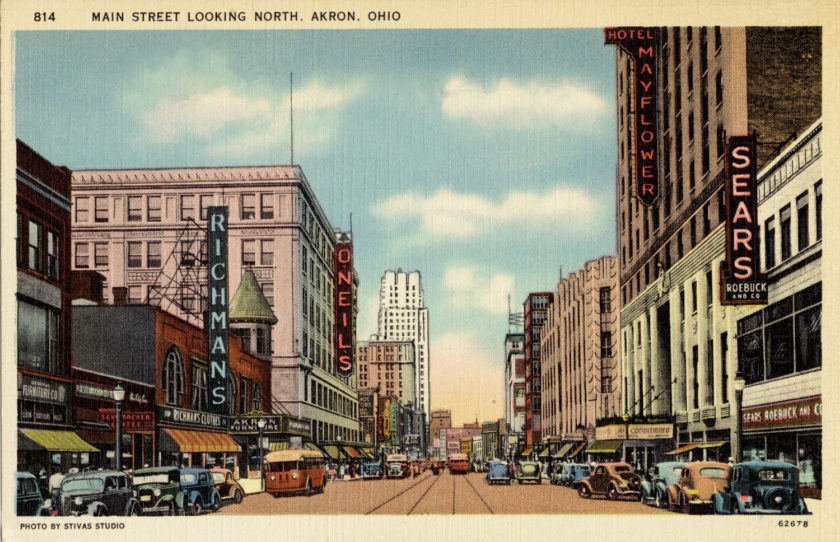
Before the rubber giants moved away, Akron’s Main Street was one of the busiest in America. With an abundance of entertainment, shopping, and dining opportunities along with convenient mass transit, it was a natural meeting place.

Construction of the Colonial Salt plant began in 1899 and by 1901 salt was being produced. At that time the area was known as Halo, but today is known as the Kenmore neighborhood of Akron. By 1905, the office force at Colonial was larger than nearby Firestone Rubber.
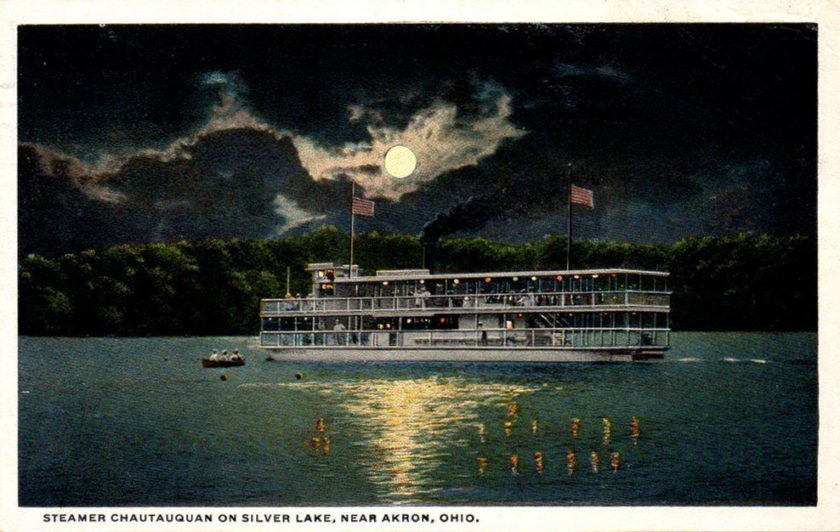
The steamboat Chautauquan sails the quiet evening waters of Silverlake.

First Congregational Church dates back to 1833. In 1834 the State of Ohio recognized petition to incorporate the First Congregational Church making it the first formally recognized church in Akron. Their first church building was located on High Street, where the courthouse is today. Their third building, pictured here, was constructed in 1909-10 and remains in…
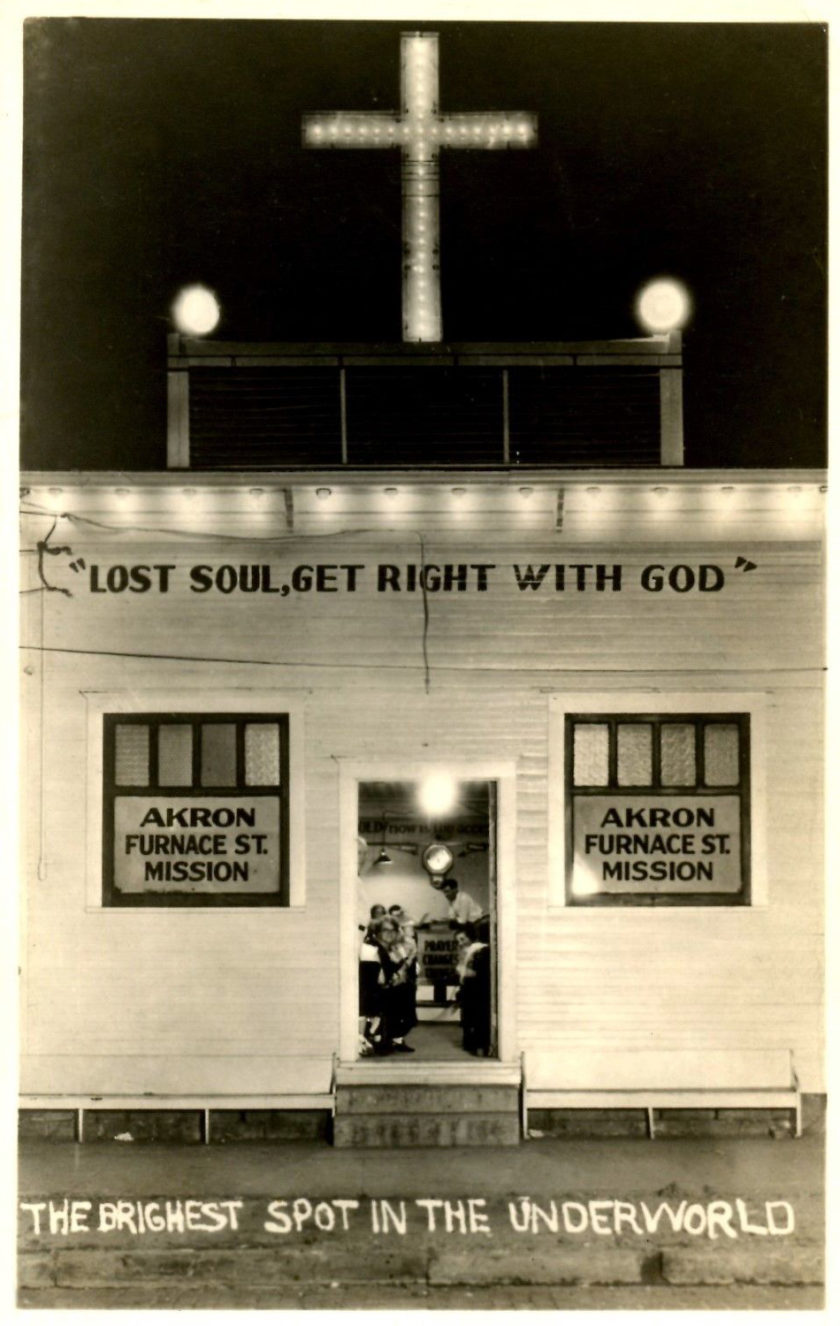
“The Brightest Spot in the Underworld” – Originally founded by the Reverend Bill Denton, the church worked to help the local area’s unserved and needy. Over the years the church successfully expanded its ministry and outreach to serve the greater Akron area.

Home of the Central Wildcats, Akron (Central) High School was located on Forge Street, between College and Union Streets, facing Union Park. The school was established in 1857, but the pictured building was erected in 1885 at a cost of $135,000. The building stood until 1973 when it was demolished to make way for the…
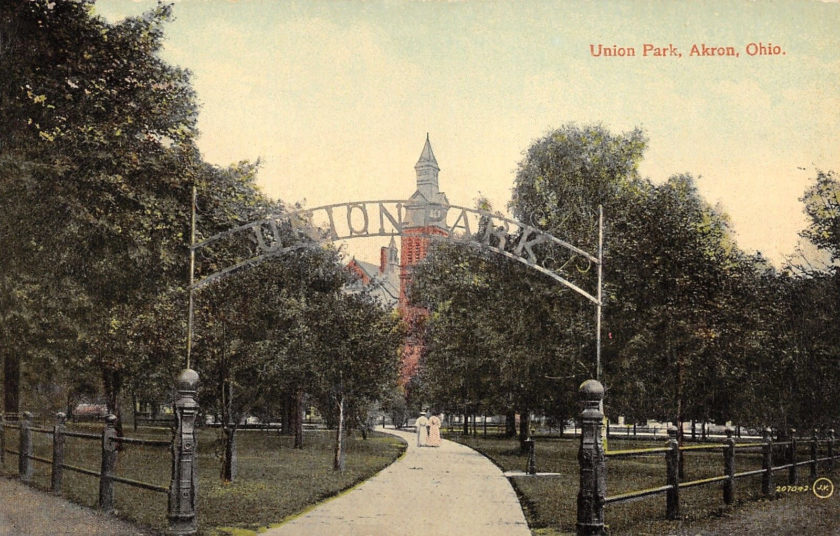
In 1848, Col. Simon Perkins, son of Akron’s founder, gave the People of Akron a gift. Originally called Flatiron Park (a reference to its triangular shape), Union Park, along with Grace Park were given to the people of Akron with a stipulation that these lands be used “for the purpose of public squares, or grounds,…

A trio of adventurous swimmers brave the cold to be some of the first in the water at Summit Beach Park, Akron, Oho.
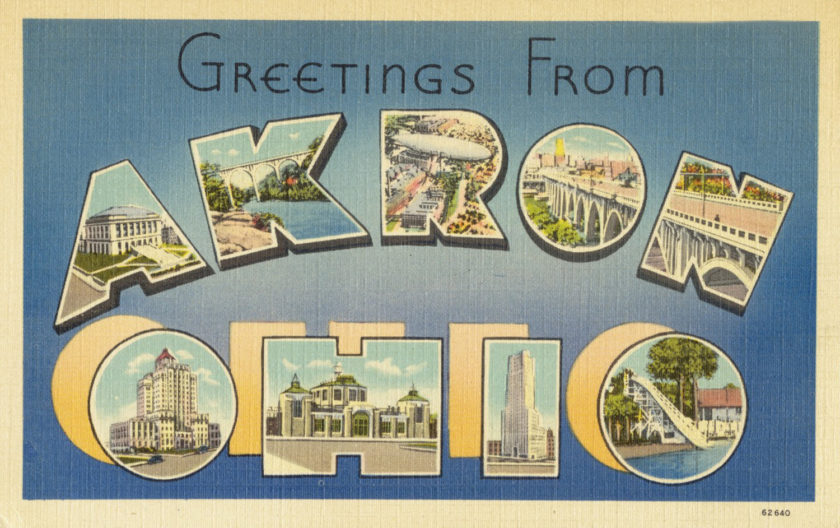
Akron is the fifth-largest city in Ohio and is the county seat of Summit County. It is located on the western edge of the Glaciated Allegheny Plateau, approximately 39 miles south of Lake Erie Cleveland, Ohio.
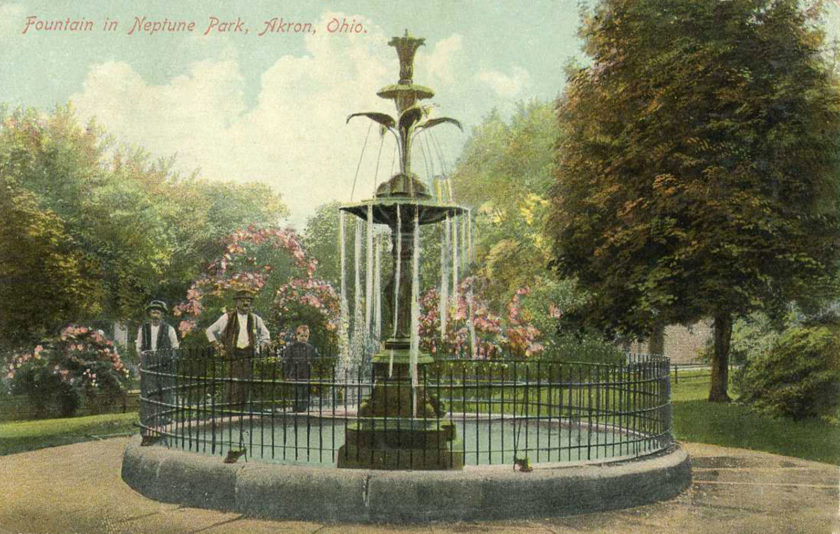
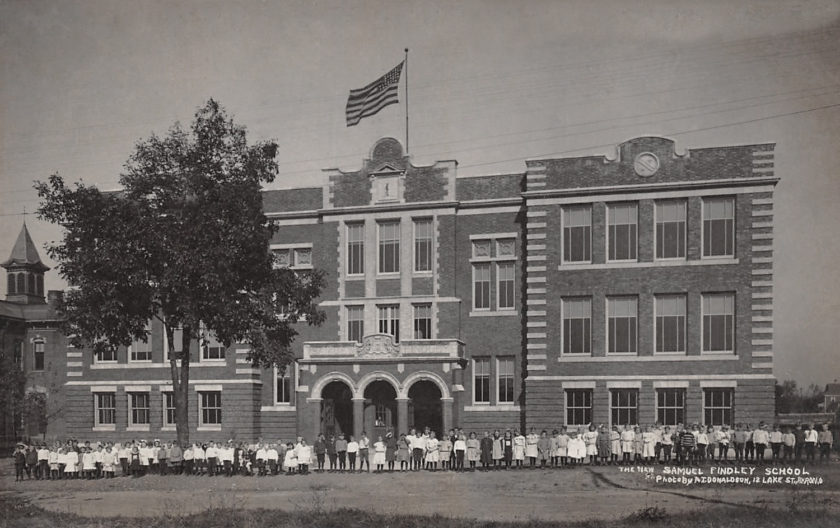
Akron’s Samuel Findley School was built in 1906. The building was designed by architects Harpster & Bliss. Elements of the Beaux Arts style with additional Classical Revival details were evident throughout the exterior and interior of the school. The school was once located in the triangular lot created by W. Tallmadge Ave, W. Cuyahoga Falls Ave.,…